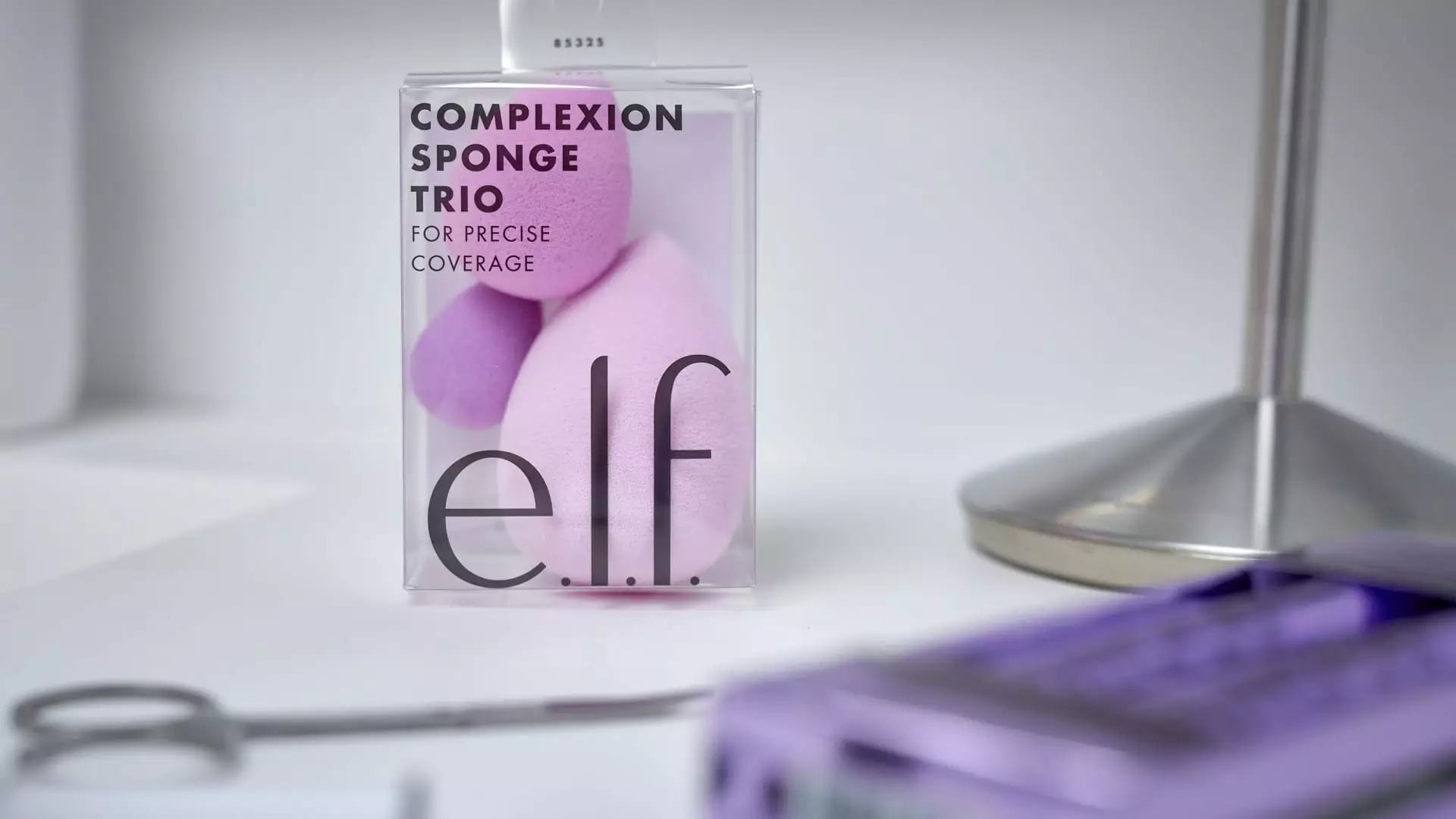The beauty sector, particularly the cosmetics industry, has been a hotbed of innovation and growth, with E.l.f. Beauty standing out as a remarkable success story. However, recent financial disclosures have raised eyebrows, leading to a reevaluation of the brand’s strategies and market position. In light of E.l.f.’s announcement of a reduced full-year outlook following a 36% plunge in profits, it is imperative to dissect this performance critically. How can E.l.f. navigate these turbulent waters while maintaining its established brand equity?
E.l.f. Beauty’s decision to lower its financial guidance illustrates significant challenges ahead for the cosmetics brand. The reported holiday sales figures exceeded expectations, leading to an initial sense of optimism; however, the repercussions of a 36% drop in profits shattered that hope. Such a downturn is rare for a brand so closely tied to rapid growth and consumer engagement. The juxtaposition of holiday sales that were reportedly robust against disappointing profit figures presents a complex narrative of increased sales volume with diminished profitability.
In the fiscal third quarter, E.l.f. reported earnings of 74 cents adjusted per share, narrowly missing Wall Street’s expectations of 75 cents. Revenue did witness an uplifting 31% increase from the previous year, climbing to $355 million, but the decline in net income from $26.9 million to $17.3 million signifies deeper issues at play. Investors didn’t take this news lightly; shares plummeted over 20% in after-hours trading, highlighting concerns about future growth trajectories.
E.l.f.’s struggles appear to be symptomatic of broader market trends impacting the beauty industry. In January, there was a reported 5% decline in mass cosmetics, suggesting that consumer spending is beginning to wane. CEO Tarang Amin pointed to external factors affecting sales, including disappointing new product performance and a significant decline in social commentary about beauty trends, primarily influenced by events such as the LA wildfires and uncertainties surrounding platforms like TikTok.
These insights highlight how interconnected the beauty industry is with broader cultural and social trends. The decline in online engagement suggests that E.l.f.’s marketing strategies, which have previously thrived on digital buzz and viral content, may require reevaluation. The essence of brand communication today appears tied to consumer sentiments, and any disconnect could severely impact sales.
In addition to adjusting sales expectations, E.l.f. faces looming costs associated with new tariffs on imports from China, where around 80% of its supply chain is located. This situation compounds the operational difficulties the company might face in maintaining profitability. Though Amin expressed that the new 10% duties were less daunting than anticipated, the potential necessity to pass these costs onto consumers poses a significant dilemma.
Price adjustments could alienate E.l.f.’s price-sensitive consumer base, which has thrived on the brand’s competitive pricing. Therefore, managing the cost structure while sustaining customer loyalty becomes a formidable focus for E.l.f. To mitigate risks, the company aims for prudent financial management and strategic investments in inventory management, infrastructure, and global market expansion.
Despite these challenges, E.l.f. Beauty continues to position itself as a leader in providing high-quality, affordable cosmetic alternatives to high-end products. The company’s ability to adapt its product offerings and respond to market dynamics is essential. However, the slowdown in growth—evidenced by recent product launches failing to generate the usual excitement—indicates a pressing need for innovation.
E.l.f. must consider amplifying its unique selling proposition to reconnect with its audience. Are there unmet needs among consumers in a post-pandemic world? Focusing on sustainable practices, inclusivity, and personalized consumer experiences could reinvigorate the brand’s image and market relevance. Revamping communication strategies to align with evolving consumer expectations may help regain traction in a competitive space.
While the current landscape poses significant challenges for E.l.f. Beauty, the brand retains a core strength derived from its early successes and extensive market presence. The key to overcoming these obstacles lies in a robust reassessment of its market strategy, particularly through the lens of consumer sentiment and behavior.
Adaptation, in tandem with thoughtful investments, offers a route to resilience. It is necessary for E.l.f. to not only react to market downturns but to anticipate shifts in consumer preferences, ensuring that it remains at the forefront of this dynamic industry. E.l.f. Beauty has proven itself a formidable player, yet its enduring success will depend on astute decision-making and an adaptive approach to today’s evolving beauty landscape.

